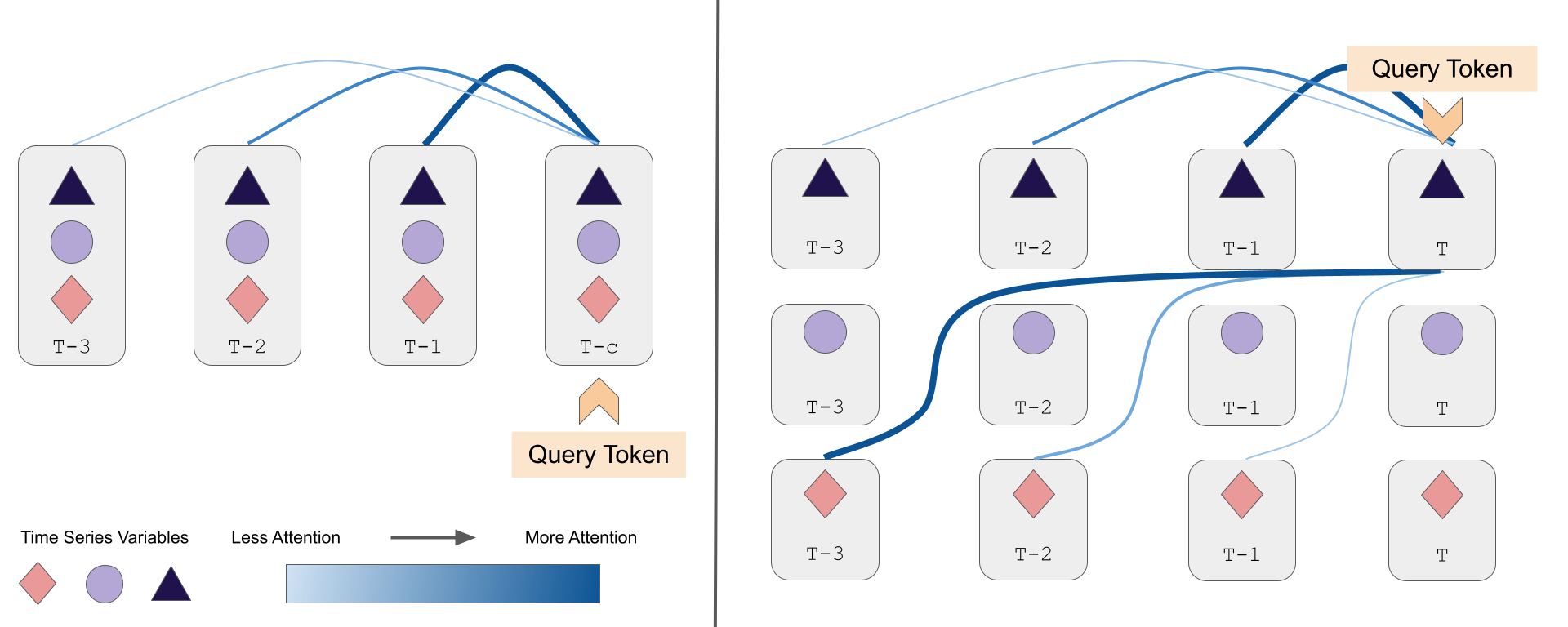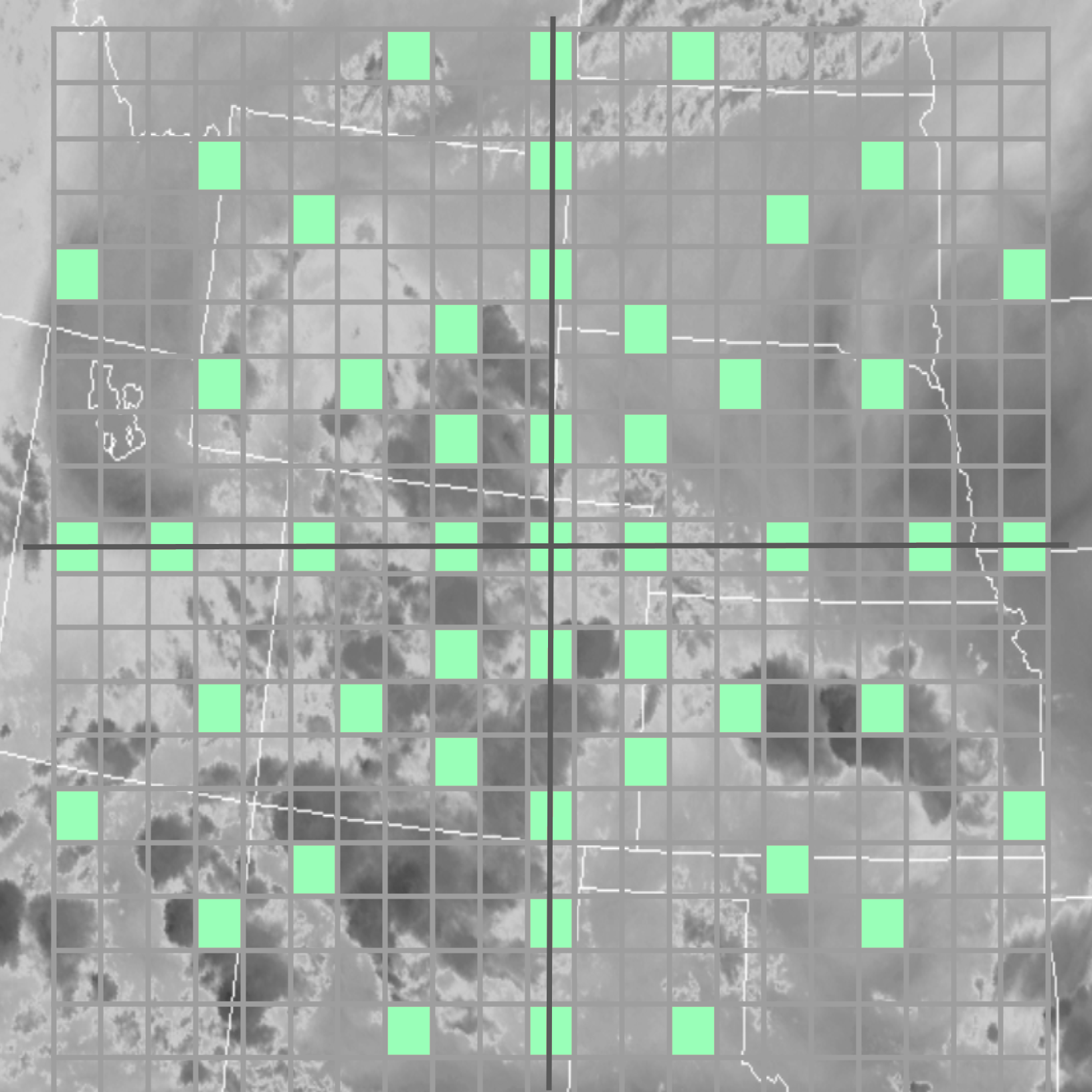This repository contains the code for the paper, "Long-Range Transformers for Dynamic Spatiotemporal Forecasting", Grigsby, Wang and Qi, 2021. (arxiv)
Transformers are a high-performance approach to sequence-to-sequence timeseries forecasting. However, stacking multiple sequences into each token only allows the model to learn temporal relationships across time. This can ignore important spatial relationships between variables. Our model (nickamed "Spacetimeformer") flattens multivariate timeseries into extended sequences where each token represents the value of one variable at a given timestep. Long-Range Transformers can then learn relationships over both time and space. For much more information, please refer to our paper.
This repository was written and tested for python 3.8 and pytorch 1.9.0.
git clone https://github.com/UVA-MachineLearningBioinformatics/spacetimeformer.git
cd spacetimeformer
conda create -n spacetimeformer python==3.8
source activate spacetimeformer
pip install -r requirements.txt
pip install -e .This installs a python package called spacetimeformer.
CSV datsets like AL Solar, NY-TX Weather, Exchange Rates, and the Toy example are included with the source code of this repo.
Larger datasets should be downloaded and their folders placed in the data/ directory. You can find them with this google drive link. Note that the metr-la and pems-bay data is directly from this repo - all we've done is skip a step for you and provide the raw train, val, test, *.npz files our dataset code expects.
The main training functionality for spacetimeformer and most baselines considered in the paper can be found in the train.py script. The training loop is based on the pytorch_lightning framework.
Commandline instructions for each experiment can be found using the format: python train.py *model* *dataset* -h.
Model Names:
linear: a basic autoregressive linear model.lstnet: a more typical RNN/Conv1D model for multivariate forecasting. Based on the attention-free implementation of LSTNet.lstm: a typical encoder-decoder LSTM without attention. We use scheduled sampling to anneal teacher forcing throughout training.mtgnn: a hybrid GNN that learns its graph structure from data. For more information refer to the paper. We use the implementation frompytorch_geometric_temporalspacetimeformer: the multivariate long-range transformer architecture discussed in our paper.- note that the "Temporal" ablation discussed in the paper is a special case of the
spacetimeformermodel. Set theembed_method = temporal. Spacetimeformer has many configurable options and we try to provide a thorough explanation with the commandline-hinstructions.
- note that the "Temporal" ablation discussed in the paper is a special case of the
Dataset Names:
metr-laandpems-bay: traffic forecasting datasets. We use a very similar setup to DCRNN.toy2: is the toy dataset mentioned at the beginning of our experiments section. It is heavily based on the toy dataset in TPA-LSTM.asos: Is the codebase's name for what the paper calls "NY-TX Weather."solar_energy: Is the codebase's name for what is more commonly called "AL Solar."exchange: A dataset of exchange rates. Spacetimeformer performs relatively well but this is tiny dataset of highly non-stationary data wherelinearis already a SOTA model.precip: A challenging spatial message-passing task that we have not yet been able to solve. We collected daily precipitation data from a latitude-longitude grid over the Continental United States. The multivariate sequences are sampled from a ringed "radar" configuration as shown below in green. We expand the size of the dataset by randomly moving this radar around the country.
We used wandb to track all of results during development, and you can do the same by hardcoding the correct organization/username and project name in the train.py file. Comments indicate the location
near the top of the main method. wandb logging can then be enabled with the --wandb flag.
There are two automated figures that can be saved to wandb between epochs. These include the attention diagrams (e.g., Figure 4 of our paper) and prediction plots (e.g., Figure 6 of our paper). Enable attention diagrams with --attn_plot and prediction curves with --plot.
Toy Dataset
python train.py spacetimeformer toy2 --run_name spatiotemporal_toy2 \
--d_model 100 --d_ff 400 --enc_layers 4 --dec_layers 4 \
--gpus 0 1 2 3 --batch_size 32 --start_token_len 4 --n_heads 4 \
--grad_clip_norm 1 --early_stopping --trials 1Metr-LA
python train.py spacetimeformer metr-la --start_token_len 3 --batch_size 32 \
--gpus 0 1 2 3 --grad_clip_norm 1 --d_model 128 --d_ff 512 --enc_layers 5 \
--dec_layers 4 --dropout_emb .3 --dropout_ff .3 --dropout_qkv 0 \
--run_name spatiotemporal_metr-la --base_lr 1e-3 --l2_coeff 1e-2 \Temporal Attention Ablation with Negative Log Likelihood Loss on NY-TX Weather ("asos") with WandB Loggin and Figures
python train.py spacetimeformer asos --context_points 160 --target_points 40 \
--start_token_len 8 --grad_clip_norm 1 --gpus 0 --batch_size 128 \
--d_model 200 --d_ff 800 --enc_layers 3 --dec_layers 3 \
--local_self_attn none --local_cross_attn none --l2_coeff .01 \
--dropout_emb .1 --run_name temporal_asos_160-40-nll --loss nll \
--time_resolution 1 --dropout_ff .2 --n_heads 8 --trials 3 \
--embed_method temporal --early_stopping --wandb --attn_plot --plotIf you want to use our model in the context of other datasets or training loops, you will probably want to go a step lower than the spacetimeformer_model.Spacetimeformer_Forecaster pytorch-lightning wrapper. Please see spacetimeformer_model.nn.Spacetimeformer.

If you use this model in academic work please feel free to cite our paper
@misc{grigsby2021longrange,
title={Long-Range Transformers for Dynamic Spatiotemporal Forecasting},
author={Jake Grigsby and Zhe Wang and Yanjun Qi},
year={2021},
eprint={2109.12218},
archivePrefix={arXiv},
primaryClass={cs.LG}
}


